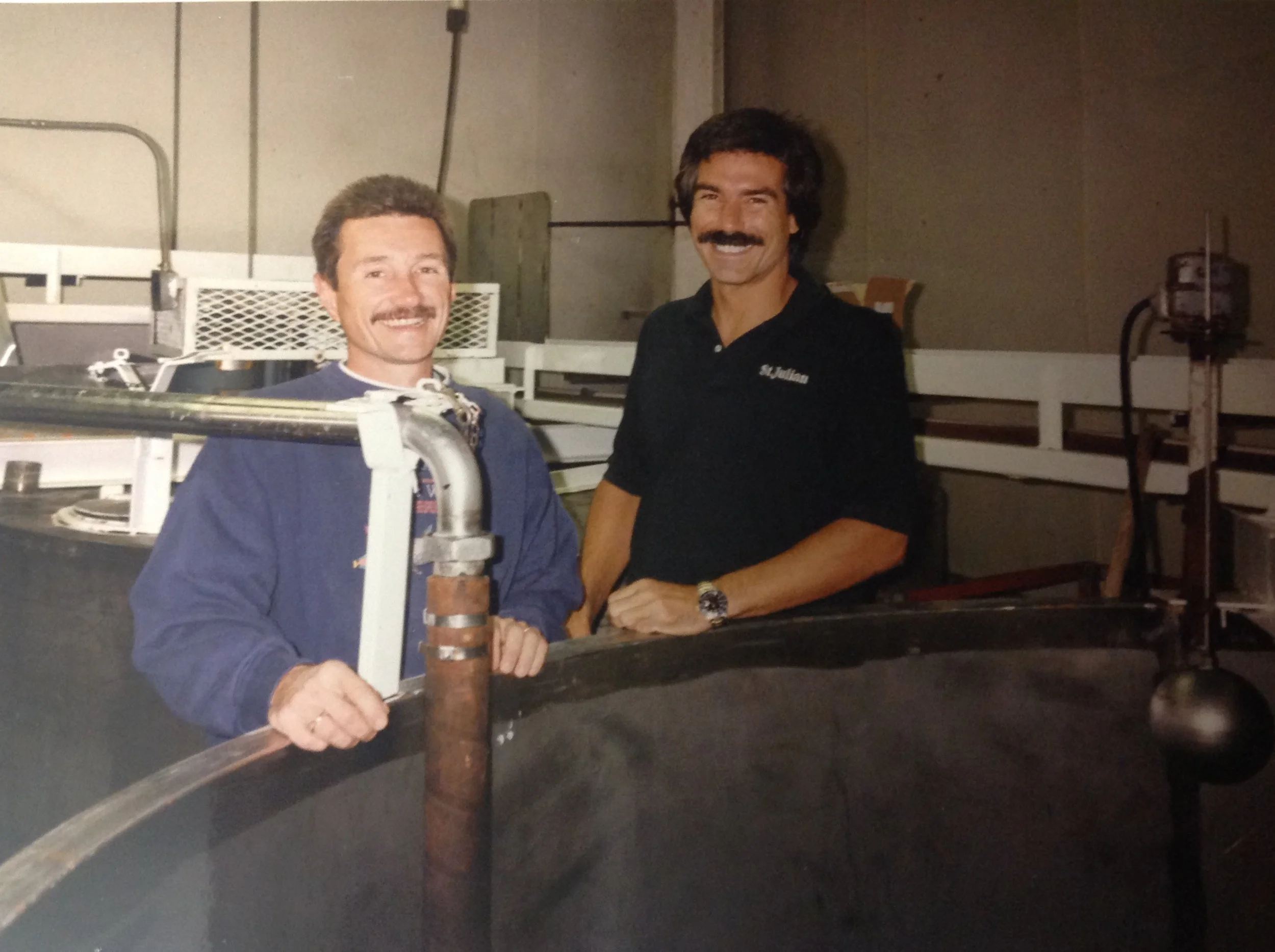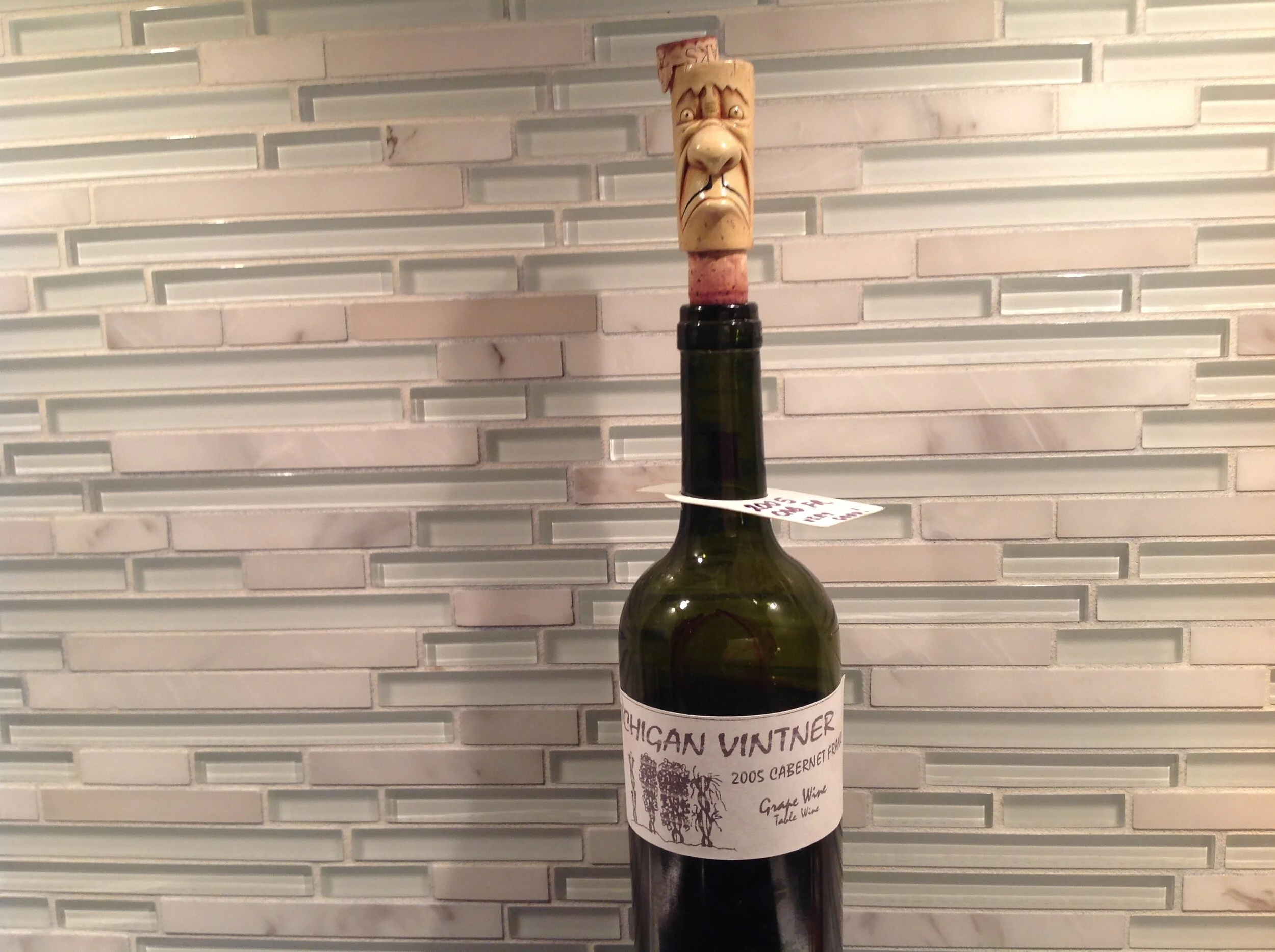CHAMBOURCIN and CHANCELLOR

When winemakers realized the possibility of fine wine production in the Midwest, Chancellor and Chambourcin became the pillars upon which quality reputations were built.
So, when local wine merchant, Dick Scheer of the Village Corner, stated that Mondales Chambourcin was the best Michigan Chambourcin that he’d ever had, I was forced to check it out. Dick has served on the Michigan Wine Competition since it’s inception and for decades as its Chief Wine Judge. For me, the three best Chambourcins that I had tasted were 2016 Fenn Valley Lake Michigan Shore Chambourcin and 1996 Michigan Vintner Lake Michigan Shore Chambourcin. If we include Missouri, I would say that the 2010 Augusta Winery Chambourcin beat both. What they all had in common was absolutely black as ink color, really condensed ripe black fruit and a fat mouth feel. By about 1985, most wineries had opted to make individual varietal wines from Chancellor and Chancellor. Prior to that they were considered an inseparable pair with Chancellor being earlier ripening and lower acid with a Merlot-like chocolate and tea component while the very late ripening Chambourcin provided elegance, class, Petite Sirah-like black berry fruit but was often plagued with very high acidity.
We decided that with meat and veggie fondue which is a very leisurely meal, we could do a little tasting to enjoy a short walk back in time to see the evolution of those grape varieties.
We started with 2014 St Julian Braganini Reserve Michigan Chancellor MI (12% abv) which I purchased at the winery for about $12. I’ve served it many times and most people found the distinct herbal hybrid aroma to be a bit much. However, I loved it as a young wine and still enjoy it though the color is a little faded and the big rich nose has shed the hybrid grapiness and now shows a Merlot-like green tea scent, some floral spice and baked black fruit. It is extremely soft on the palate with just enough earth and leather to keep the waning fruit interesting. Though its fat chocolatey finish is long gone, it still brings back fond memories of Dave and Chas. Chas has long ago retired and Dave is no longer with us.
Next up, is from one of our favorite winery/restaurants in the Finger Lakes. 2019 Thirsty Owl Wine Company Finger Lakes Chancellor NY (11.3% abv) which I also purchased at the winery for about $12 is, of course, more youthful and has more gripping texture. I suspect it may have been even more so because the winemaker has finished it with 3 g/l residual sugar. The wine does not taste sweet at all, however, so the RS must simply balance it. The depth of fruit is remarkably fine, and like the St Julian, the hybrid grapiness is well under control. It is no doubt at it’s peak right now. I’ll make sure we drink up whatever stock we have in the next year.
Fenn Valley (circa 2017-18) Lake Michigan Shore Capriccio (12.5% abv) MI which, again, I purchased at the winery for probably less than $12 is one of a trio of Chambourcins offered by Fenn Valley. Their Nouveau, the Capriccio and their varietal Chambourcin are all close to 100% Chambourcin, though all are quite different. Of them, I like the varietal Chambourcin best but because they sell so much of the Nouveau and Capriccio at reasonable prices, the more expensive varietal Chambourcin is in very short supply. The color here is completely mature but not old looking; deeply saturated burnt Sienna in hue. The nose is actually a bit like the St Julian Chancellor with stewed cherries, a core of black fruit with leather and a hint of apricot. It is silky soft on the palate with a delicate finish. I’m glad this is my last bottle of this batch. It is still good but the vigor and power is fading fast.
Just for laughs, I pulled out a library wine from Michigan Vintner. 2011-13 Michigan Vintner Lake Michigan Shore Red Hybrid (blend of mostly Chambourcin with Cab Franc and other reds) MI (if my calculations of sugar additions are correct it should be about 12.5-13% abv and completely dry) has remarkable color for its age. It is deeper and redder than either the Fenn Valley or the St Julian. The nose is a fine expression of cedar, strawberry with hints of leather. On the palate, a big surprise rush of fruit leather and dry peppery spice leads into a fairly sweet though well textured finish. Ironically, this wine is just about zero residual sugar yet it finishes with a sweetness perhaps derived from several years of barrel evaporation and concentration.
Finally, we ended the tasting around with the 2018-20 Mondales Fennville Chambourcin (13.6% abv) MI $21.99 at the Village Corner. This is a very nice wine, but I’m not going quite as far out on a limb as Dick did in proclaiming it the best ever Michigan Chambourcin. The bright ruby color, fresh vivid, clean, cherry-like fruit in the nose is a refreshing time reversal of the wines with which we preceded it. Soft supple red plum-like ripeness and a very soft clean finish with class and none of the grapy strong flavors that sometimes taint young Chambourcin. I’m not sure that I would have picked it out in a blind lasting as a hybrid. It is much more refined and elegant than I would have expected for a wine of this age.
I will follow up this blog post at some point with another tasting of red hybrids from Missouri and other states. I welcome your comments on all of my posts, but especially those with locally grown wines.
Enjoy in Good Health,
A Brian Cain, the Michigan Vintner




